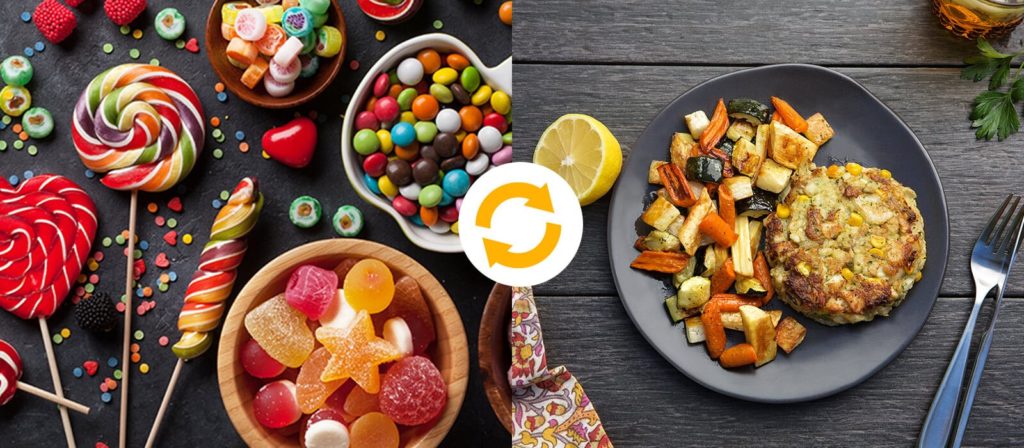ARTICLE AT A GLANCE
by Alan Bishop
The majority of people looking to lose weight tend to get caught up on a few pieces of the puzzle while never seeing the big picture in its entirety. I am in a unique position where I get the opportunity to work with elite-level athletes as well as clients from the general population. While there are many differences between the two sectors, one of the biggest similarities is that most people are more than willing to work hard to get the results they want, but they don’t know where to start when it comes to improving their body composition and achieving fat loss.
The biggest misconception about a body transformation is that exercise is more important than nutrition. Many people make the mistake of thinking exercise will make up for their poor eating. Let me be clear: Exercise is absolutely important and essential, but you cannot out-train a bad diet. Nutrition is the “X factor.” What I want to do is share a simple method that is easy to adhere to, making a body transformation not only achievable, but also a change maintainable for years to come.
This method has produced phenomenal results for the individuals I’ve worked with, but as with all lifestyle changes, if you have any questions, it is always great to start your journey with a visit to your general healthcare practitioner to make sure you’re following a safe and effective plan. In fact, I would highly encourage you to present this article to your physician to walk through any questions you might have and to clear up all confusion before you start.
Nutritional Protocol: Carb Cycling
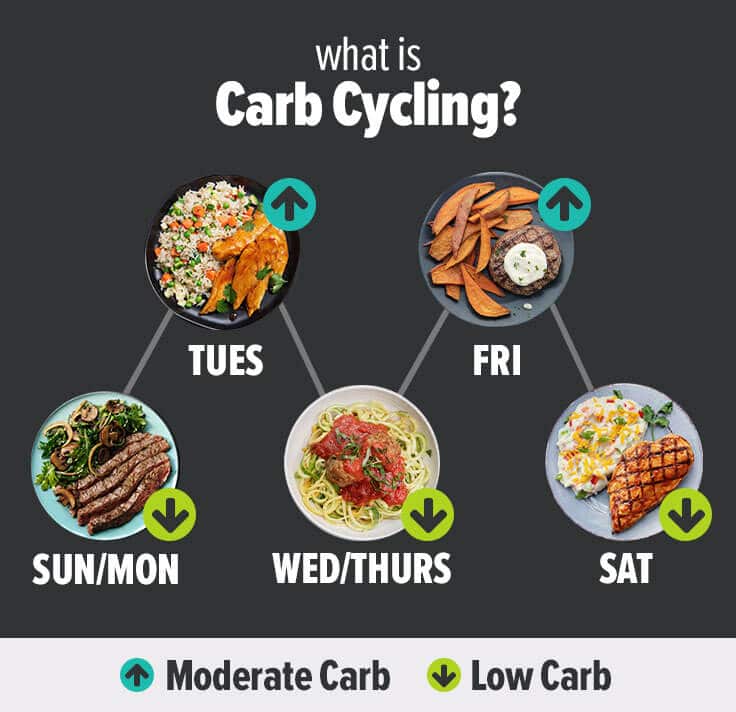
When putting together a meal plan, the two most important things to keep in mind are adherence and sustainability. When it comes to getting results, consistency is key, and you must stay committed to the process. For this reason, I am a huge advocate of carb cycling.
Carb cycling is a method of manipulating caloric intake by restricting carbohydrates on some days and reintroducing them on others. One of the biggest issues with other forms of intensive dieting is that the majority of people are unable to sustain their plans long-term. With carb cycling, you will always have a light at the end of the tunnel because you know your next “carb reload” is right around the corner.
By cycling your carbohydrates, your body can achieve a caloric deficit, which leads to body fat loss. Unlike with other forms of intensive dieting, in which weight drops and then immediately yo-yos back up once the diet is over, this method accounts for the hormonal stress that comes with caloric restriction by allowing for a steadier and more consistent weight loss that doesn’t wreak havoc on your endocrine system and won’t create a yo-yo effect with your body weight.
When it comes to carb cycling, I am a huge advocate of a “two on, one off” method. In this method of carb cycling, you spend the first two days drawing your only carbohydrate sources from raw vegetables (“on” a caloric restriction), and on the third day, you carb reload (“off” caloric restriction) with low-glycemic-index carbohydrate sources such as organic steel-cut oats; brown and wild rice; yams and sweet potatoes; quinoa; etc. On days four and five, you’re back to raw vegetables only, and on the sixth day, you reload on carbs. You continue this plan for a full 30 days.
Typical day with a carb restriction with Metabolic Meals:

Typical day with a carb reload with Metabolic Meals:
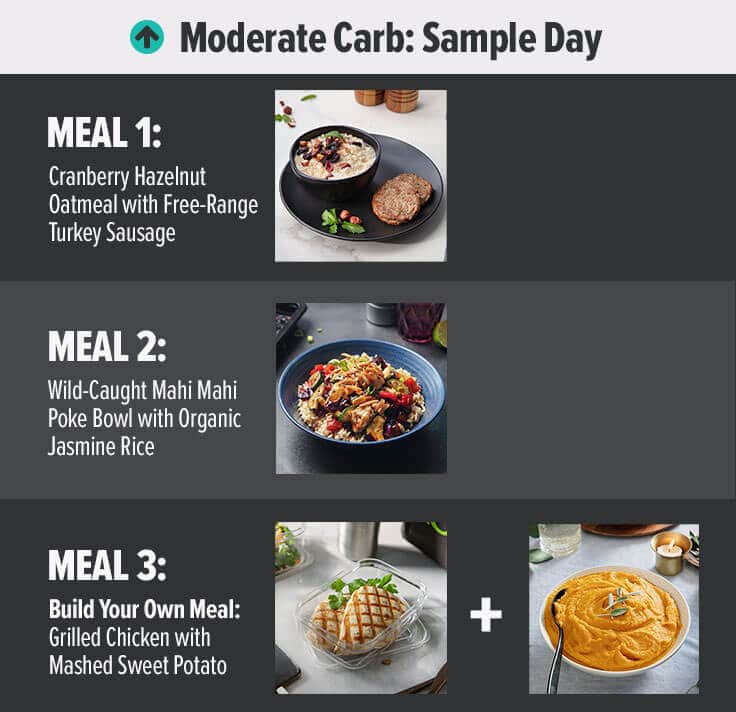
Chef-crafted meals optimized for a carb cycling plan.
In order for this plan to be effective, there are five rules you must follow:
1. Eat your meals within a specific window.
Research is finding that people who eat their meals within an 8-10 hour window metabolize fatty acids more efficiently, improve insulin sensitivity and may also clear away damaged cells vs. grazing for 15+ hours.
Translation: more efficient fat burning, better immune function and quite possibly a slowing of the aging process.
2. Eat 20 to 40 grams of protein at every feeding.
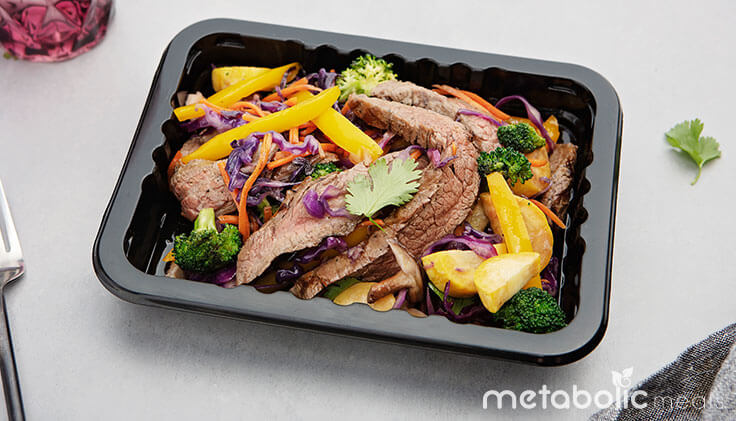
Japanese Grilled Grass-Fed Flank Steak with Stir Fry Vegetables: 32g Protein
Protein promotes weight loss by stabilizing blood sugar and maintaining muscle mass, which prevents the body from entering a catabolic state that produces a “rebound” effect once more calories are reintroduced. Additionally, higher-protein diets protect from the loss of muscle mass during caloric restriction, making your protein intake critical during a diet.
3. At every feeding, eat fiber in the form of vegetables
Even on your carb reload days, you need to have vegetables at every meal. Fiber helps regulate blood sugar, which helps regulate body weight. Studies have shown that those who consume high levels of fiber maintain better body weights than those who don’t.
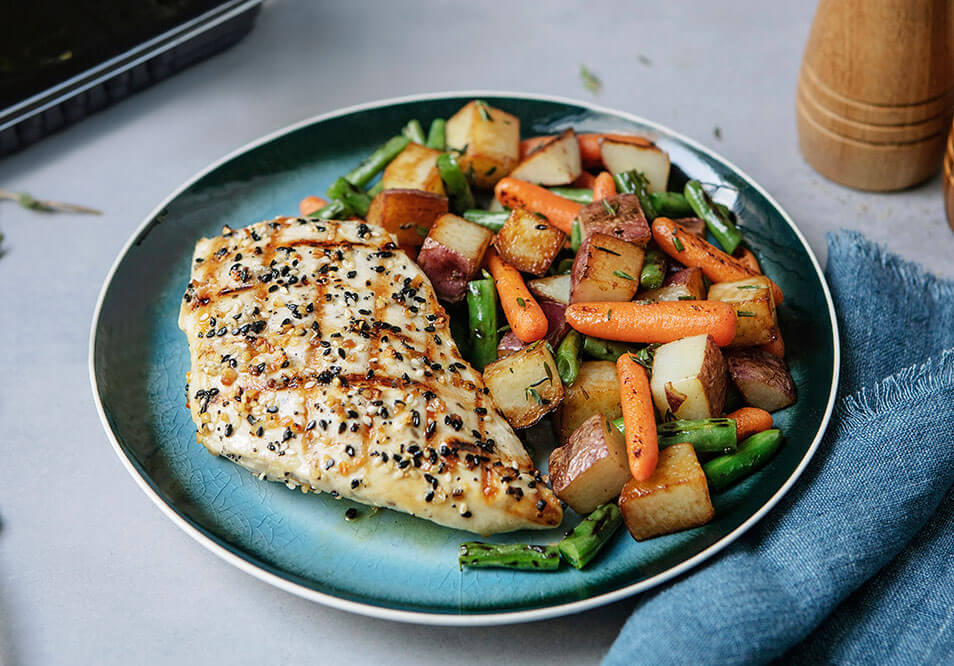
‘Everything’ Grilled Chicken with Herb Roasted Veggies: 5g Fiber
4.Eat whole foods first.
Supplemental protein in the form of whey powder is great immediately post training, but it is much less ideal to consume throughout the day. In fact, an acute response to ingesting whey protein is increased insulin levels, which is ideal for bringing down cortisol levels post-exercise but is less than ideal the rest of the day. Your focus for your meals should be unprocessed whole food sources. If you can’t grow it or hunt it, you should probably avoid it.
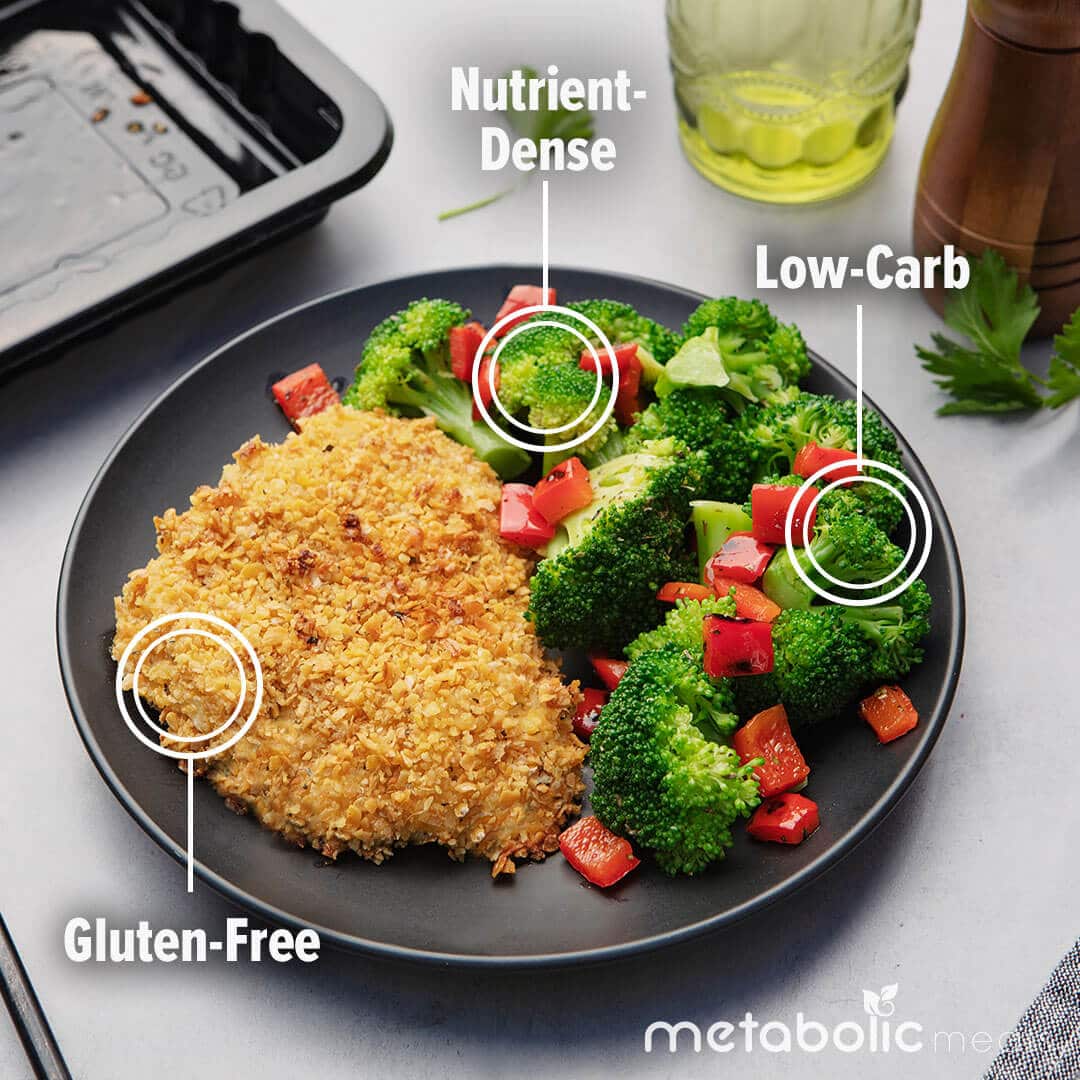
5. Consume a daily minimum of 3 to 6 grams of omega 3 fatty acids.
Omega 3 fatty acid intake has been directly linked to improvements in body composition. Additionally, healthy fats are critical for maintaining an optimal hormonal profile, especially during times of caloric restriction.
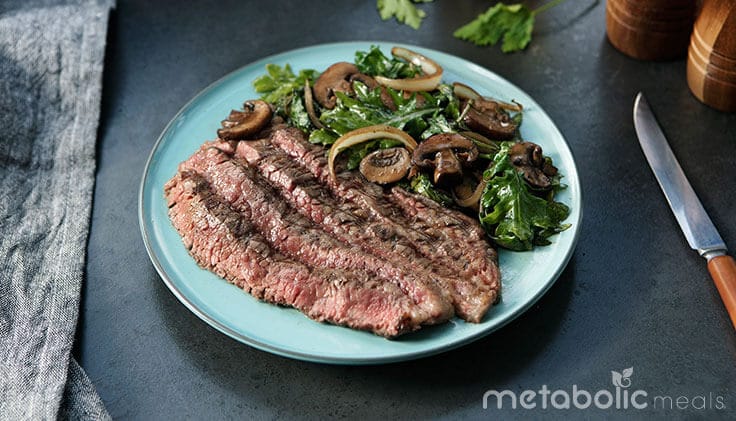
Grilled Grass-Fed Flank Steak with Balsamic Glazed Mushrooms and Kale: When choosing protein sources, make sure and opt for grass-fed, pasture-raised and wild-caught versions as they have a superior omega 3:6 ratio.
Avoiding Common Pitfalls
As with all things in life, don’t let what you don’t know be the determining factor in your success. To have a successful body transformation, avoid these four common pitfalls:
1. Don’t drink your calories.
Flavored beverages are a leading contributor to derailed progress. For your 30-day transformation, stick to water and unsweetened teas or black coffee.
2. Know where your next meal is coming from.
Failing to plan is planning to fail. Life gets in the way, and when it does, it pays to have prepped your food. Don’t let an unusually busy day force you to hit the drive-thru.
3. Season with spices, NOT sauces.
Many sauces, such as ketchup, barbecue sauce, and salad dressings, are hidden high-carb sources. Stick to herbs and spices!
4. Hire an expert.
When it comes to a training plan, don’t be afraid to invest in yourself. Hire an expert to get you started and provide guidance on your journey. Remember, this expert works for you. If he can’t provide success stories and before and after photos or if he spends the whole session texting, he isn’t for you.
It’s simple to build your own Carb Cycling plan using our easy to identify low-carb meals:
![]()
Alan Bishop is the Director of Sports Performance for Men’s Basketball at the University of Houston. Alan has a master’s degree in Sports Conditioning and Performance and holds certifications through the NSCA, CSCCA, and USAW. You can follow him @coachalanbishop on Twitter and Instagram.






